 |
||
|
||
| ||
 Contents
Not so long ago we reviewed a new ATI's product released for the price niche of $130-200. That was RADEON 9500. In that article we discussed why it was so important to have video cards on the middle level - NVIDIA has almost nobody to compete against in this sector. The RADEON 9000/Pro is a competitor against the entry-level cards from NVIDIA (GeForce4 MX); the RADEON 8500 which is a bit stronger than the RADEON 9000 Pro is all by itself (it has a higher price than the GeForce4 MX has, but it's inferior to the GeForce4 Ti 4200 in performance. In fact, it takes an intermediate position). The whole price sector of $150 to $220 (which is the most popular among gamers) is totally controlled by NVIDIA and its partners (it includes GeForce4 Ti 4200 of all kinds). That is why it was a thoughtful decision of ATI to bring out a new line able to stand against the above mentioned NVIDIA's solutions. Unfortunately, SIS is not able to create a card with qualitative and quantitative parameters close to the Ti 4200, not to mention other companies. Matrox left the market long time ago; although its Parhelia is close in speed to the Ti 4200, it's pricier than the RADEON 9700 Pro. The PowerVR has unclear prospects at all. That is why ATI is the only firm that can be competitive here. Here is the RADEON 9500/9700 family:
This official list will probably have to be corrected, but later on it. And now, before we go straight to the analyses of the RADEON 9500, let's have a look at the reviews dealing with the new line of ATI. Theoretical materials and reviews of video cards which concern functional
properties of the VPU
In the RADEON 9500 review we found out that this product doesn't have a performance level suitable for its price of $140-150. That is why its defeat to the Ti 4200 based card brings to naught all advantages of its DX9 support in many cases. Besides, the RADEON 9500 loses to its rival even in the modes with enabled AA and anisotropy. That is why such cards shouldn't be priced over $120. Why do we return to the RADEON 9500 repeating the base review rather than estimating the production card? There are two reasons: either the today's card is based on a new, cheaper, design, or the influence of the 128MB cards is so great that it has to be studied thoroughly. Below you will see that the design is exactly the same. But the fact that the card comes with 128 MB memory instead of 64MB boosts the performance much. The RADEON 9700 Pro was released so much time ago but the 9500 model hasn't yet received a separate PCB or a separate chip. Why? Why did ATI decide to cut the memory size of a RADEON 9700 based card and cut off the chip? Cards based on a 8-layer PCB with a 256-bit bus are quite expensive (as we mentioned in the review on the RADEON 9500). Besides, it uses the same expensive R300. The analyses of certain information from reliable sources shows that the cost price of such PCBs is not so high anymore, because the production technique is already mastered both by PC Partner (which manufactured all RADEON 9700 Pro in the beginning) and by the partners most of which have already started making such cards and PCBs. As we know, a product goes to the mass market when the expenses on its production become as low as possible. As for the chips... The same sources notify that the production of the VPU R300 is getting stable, that is why the prime cost of them is falling down as the percentage of valid dies grows up. Therefore, having estimated the benefits of production of separate PCBs and chips, ATI and its partners chose the approach of "Velocity 100", i.e. they assemble the RADEON 9500 on the same 9700 model with the memory chip "shortened". It's possible that they use graphics processors that failed to work at the frequencies specified for the RADEON 9700 Pro, because the 9500 is to be clocked at 275 MHz against 325 MHz of the RADEON 9700 Pro. Though it's also possible that they strip off normal chips. However, even in this case there are a lot of questions to be answered: for example, is such cut-off implemented on the software level or on the hardware one? We'll get back to this issue later. What's the key difference between the 64MB RADEON 9500 and its brother with 128MB memory? Let's take a look at the card. Card
NO differences from the PCB of the RADEON 9700 Pro! Note that each chip of the above mentioned marking has a 32bit access. That is why having mounted all 8 chips the manufacturer leaves the 256bit bus as well! The RADEON 9700 64MB card was left with 128 bits when they took off 4 chips - taking into account that each of four remaining chips was 32bit, the total capacity amounted to 128 bits. And this card comes with the 256-bit interface! That is why the readers should remember this surprise from ATI: Until they develop a design specially for the RADEON 9500 based cards (and it's probable that they will never do it, because production of cards based on the current design becomes cheaper with time), we should remember that the 64MB and 128MB cards differ only in the memory exchange interface: 128 and 256 bits. This can't help having an effect on the performance, though the VPU is stripped off markedly, and even a 256-bit bus would hardly help the 4-pipeline chip change its speed considerably (but our tests will show that the speed gain is noticeable).When we studied the RADEON 9500 for the first time we noticed that the chip is marked as the RADEON 9700 Pro 
In view of this I think that the RADEON 9500 is cut off on the software level. If you remember, in the 3dfx Velocity100 they locked one module on the software level to make its speed slower compared to the Voodoo3 2000. But that time they didn't provide any reliable protection, the key for the second TMU was easy to find. The programmers from ATI are smarter. They tried to protect a lot of cards from overclocking, in particular, RADEON 9000 - whatever frequency you set the speed doesn't change. The RADEON 9700 has a cunning BIOS: its frequencies often remain unrecognized by tweakers. That is why if we actually have the RADEON 9700 instead of RADEON 9500, it can be a real problem to remove the software protection and turn the latter into the former. However, this aspect is yet to be studied. Now look at the cooling system.
I'm going to make no more comments on the design of the card as we have already reviewed a lot of various RADEON 9700 Pro based solutions and covered a wide range of aspects of such PCBs. OverclockingWhen I took off the heatsink I saw that the die is almost as high as the protection frame around the chip which the heatsink is pressed against, that is why the chip is cooled effectively (we used Arctic Silver thermo grease). And such high effectiveness couldn't help boosting the overclocking potential.
Excellent, isn't it? :)
Note

Test system and driversTestbed:
The test system was coupled with In the tests we used ATI's drivers 6.200. VSync was off in the drivers, texture compression was off in the applications. DirectX 8.1 was used. Texture detail level set to High Quality. For comparison we used results of the following video cards:
Drivers' settings   All the settings were discussed in the reviews listed above. Test results2D graphicsLet's start with 2D. The 2D quality is really perfect, like in case of the previous RADEON 9700 Pro based cards! Remember that estimation of 2D quality can't be objective. It depends on quality of a sample, and a card/monitor tandem (you should pay special attention to quality of the monitor and the cable). 3D graphics, 3DMark2001 SE - FillrateAll measurements in the 3D tests were carried out at 32-bit color depth. Fillrate
 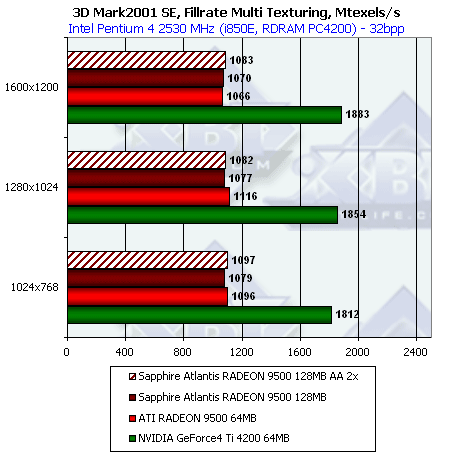 In this test we are to prove that the RADEON 9500 128MB has a 256-bit bus indeed. Look at the first scores. We enabled the AA2x mode (the lightest AA) knowing that it didn't cause speed drops in the RADEON 9700Pro. Taking into account that the RADEON 9500 is deprived of half of the pipelines, it won't be easy for it to cope with the AA even with a 256-bit bus, that is why we simplified the task as in this test the chip doesn't have much work to do. In 1024x768 the speed remains the same, but after that it goes down. In the multitexturing mode when the chip may use all its possibilities in operation with the textures, the performance doesn't worsen at all when the mode changes for AA2x! This fact proves that the card comes with a 256-bit bus! 3D graphics, 3DMark2001 - gaming tests3DMark2001, 3DMARKS
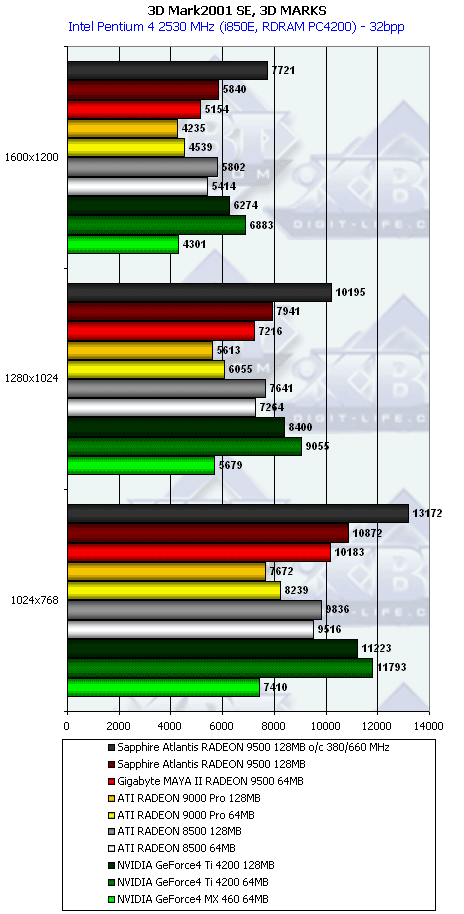 3DMark2001, Game1 Low details

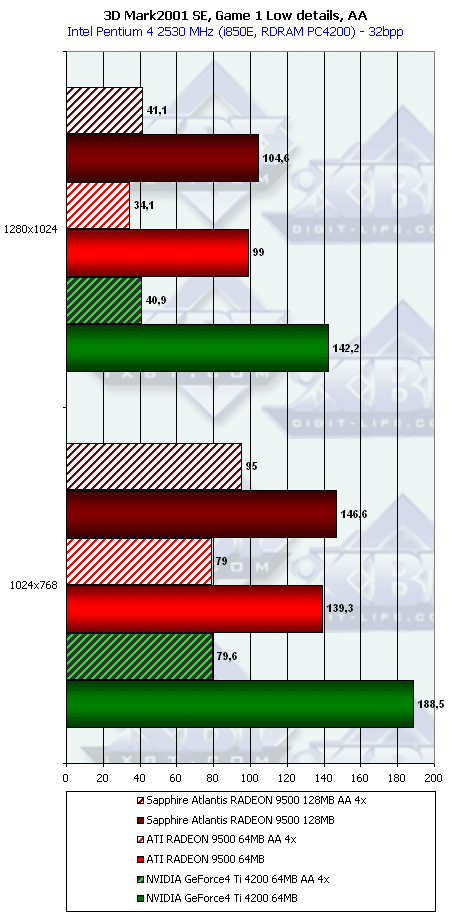 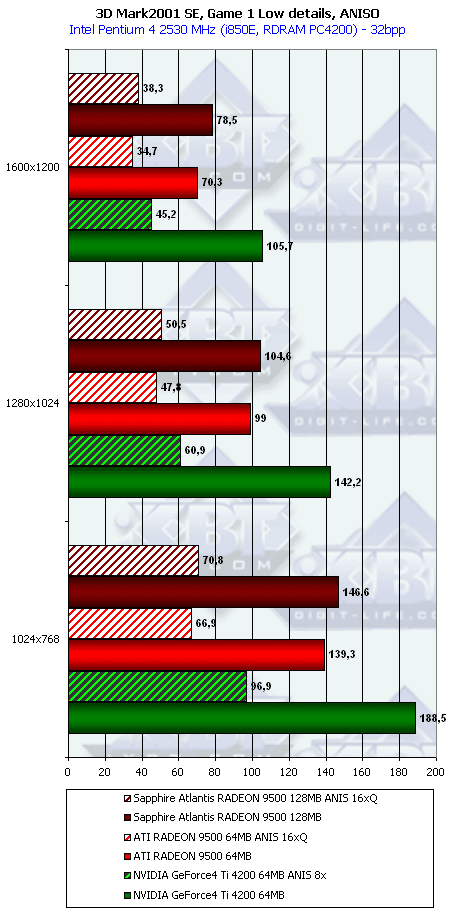
3DMark2001, Game2 Low details
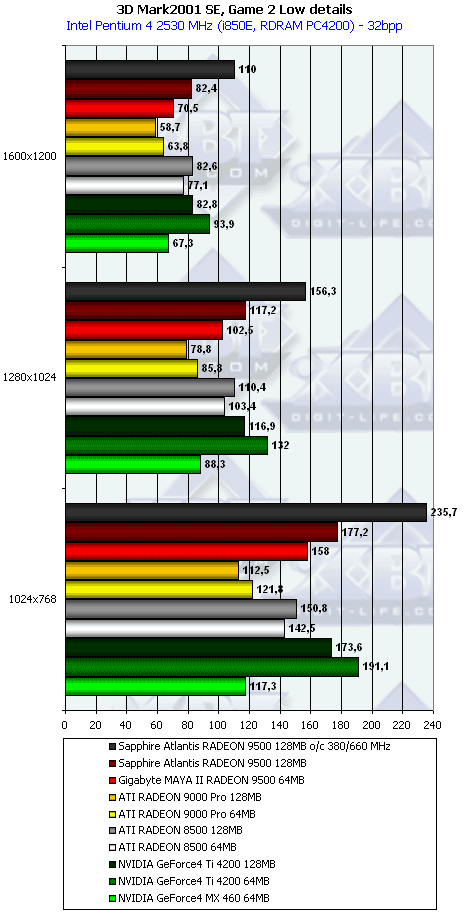
 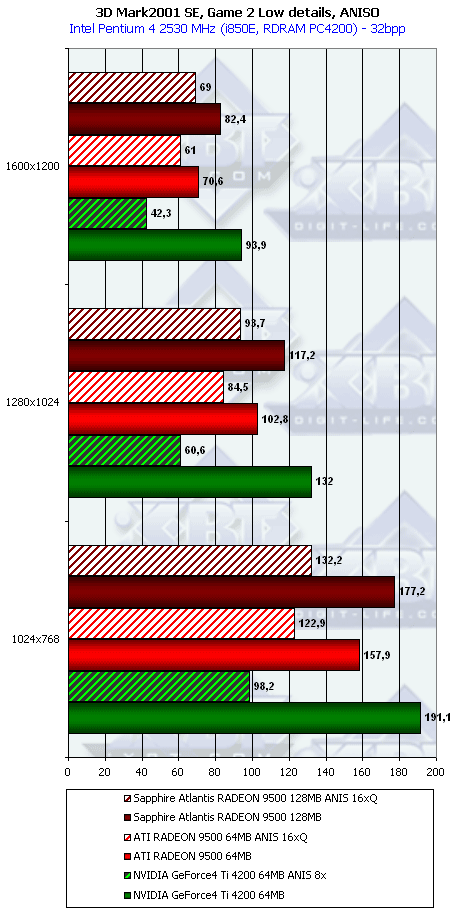
3DMark2001, Game3 Low details
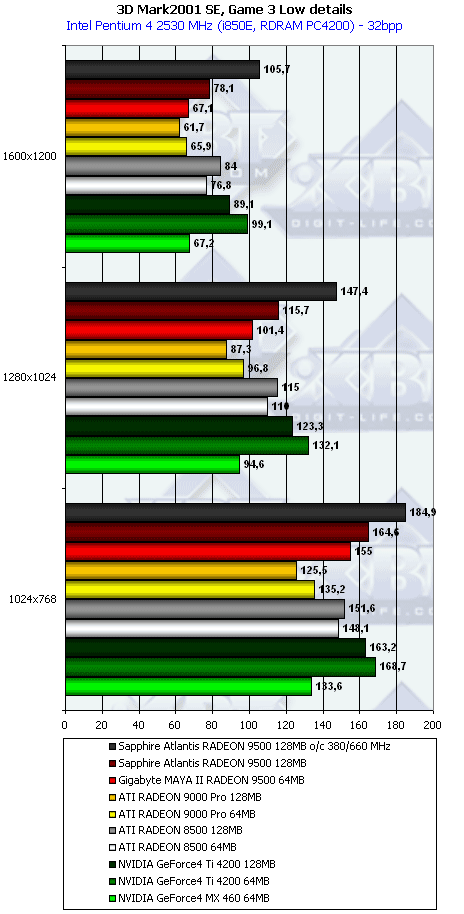
 
3DMark2001, Game4

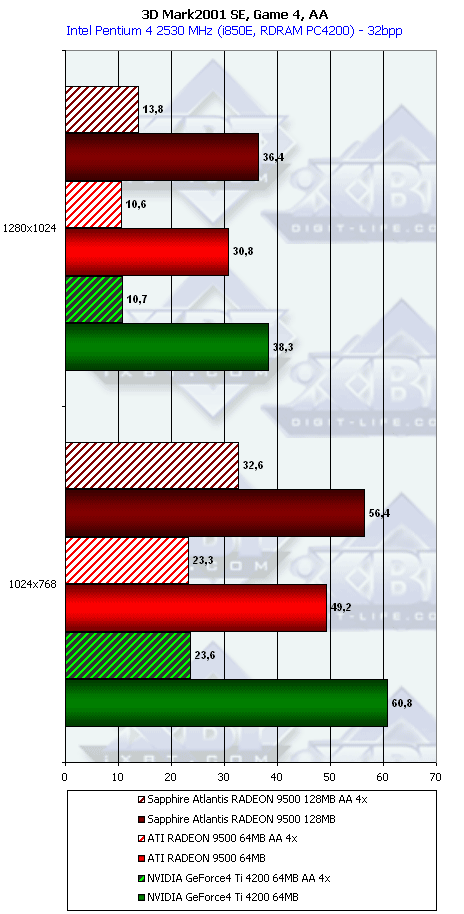 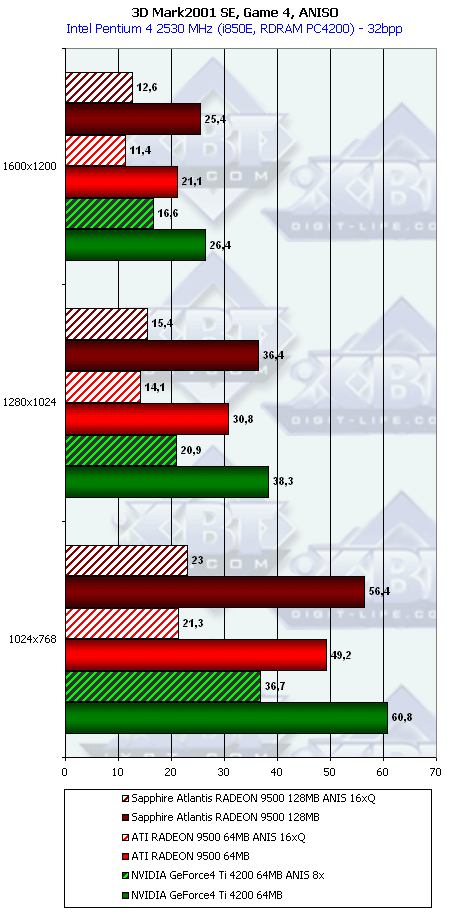
It's obvious that the 256-bit bus helps a lot to such a weak and crippled chip. At least, in the AA modes the RADEON 9500 outstrips the Ti 4200. We haven't tested yet in the combined (AA+anisotropy) mode, but I reckon the ATI's solution won't yield to the GeForce4 Ti 4200 either. 3D graphics, gaming testsFor estimation of 3D performance in games we used the following tests:
Quake3 Arena, Quaver

 
Serious Sam: The Second Encounter, Grand Cathedral

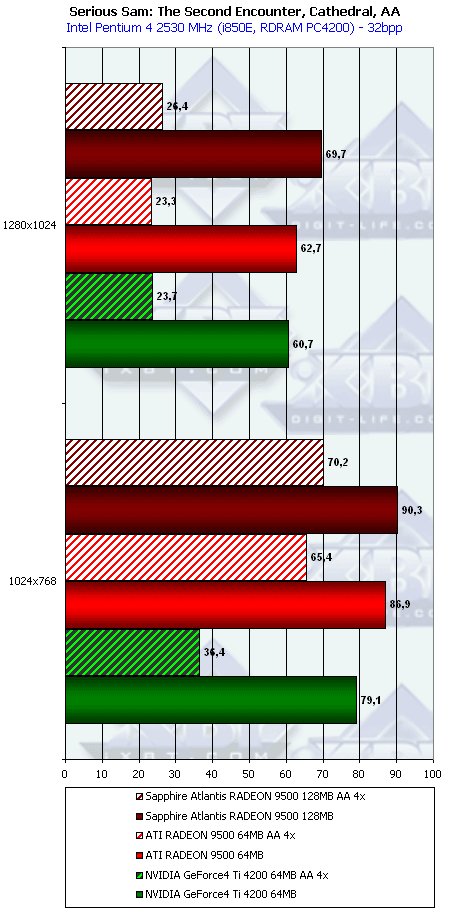 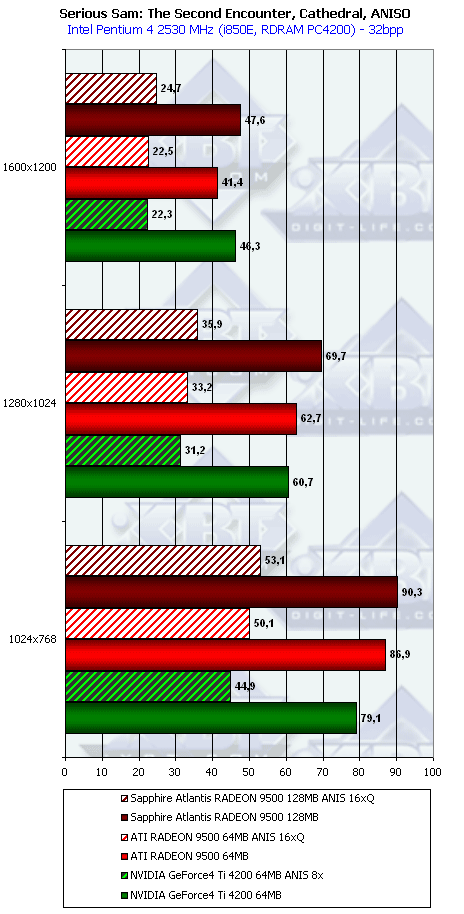
Return to Castle Wolfenstein (Multiplayer), Checkpoint

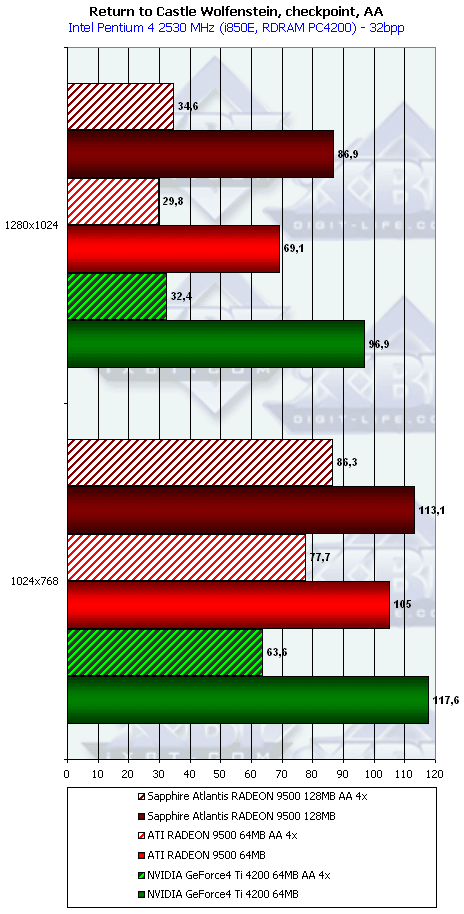 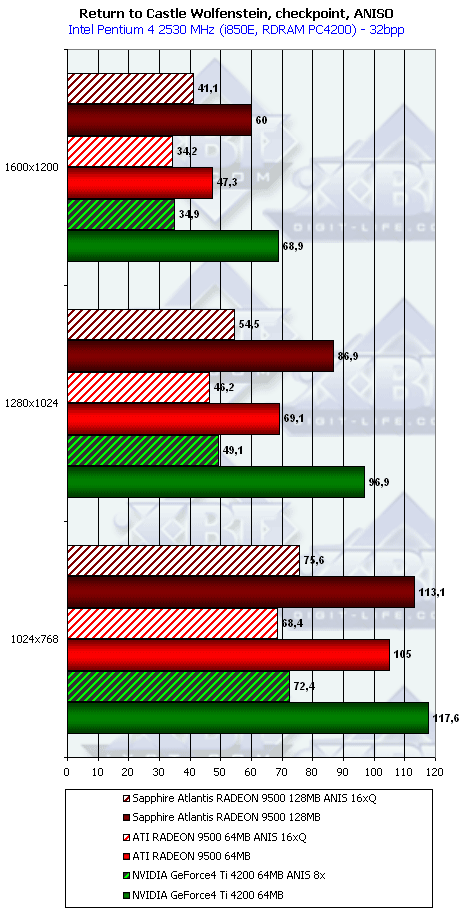
Comanche4 DEMO

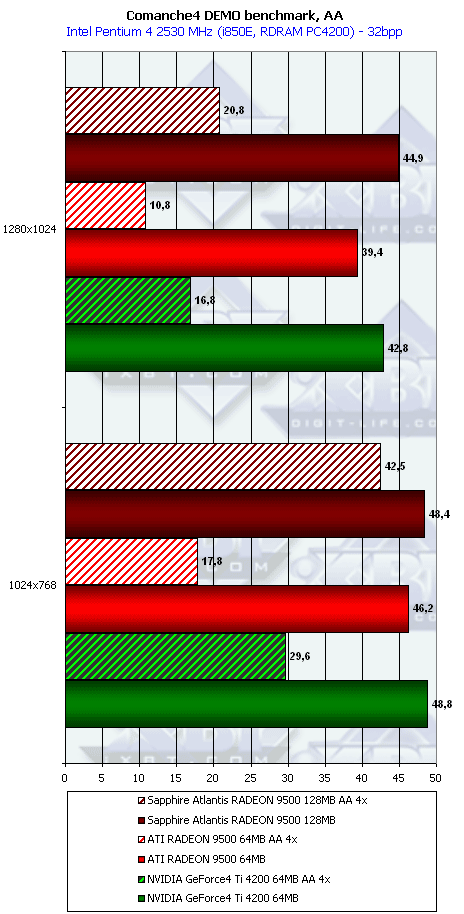 
Unreal Tournament 2003 DEMO
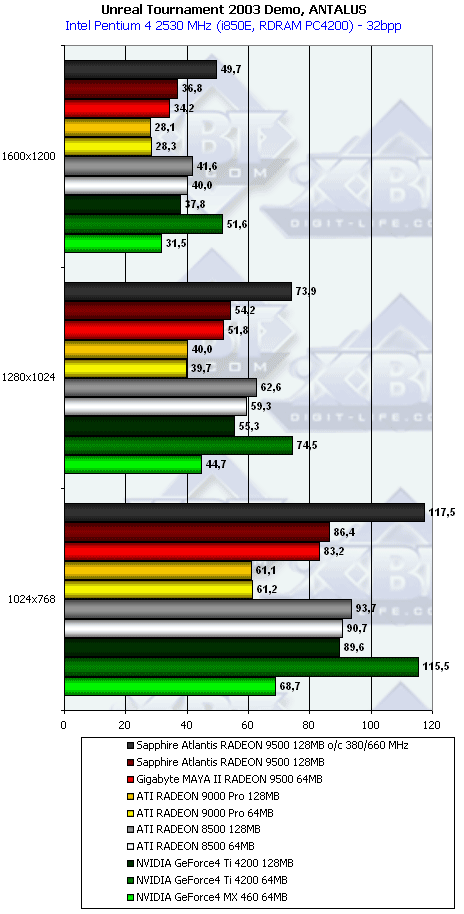
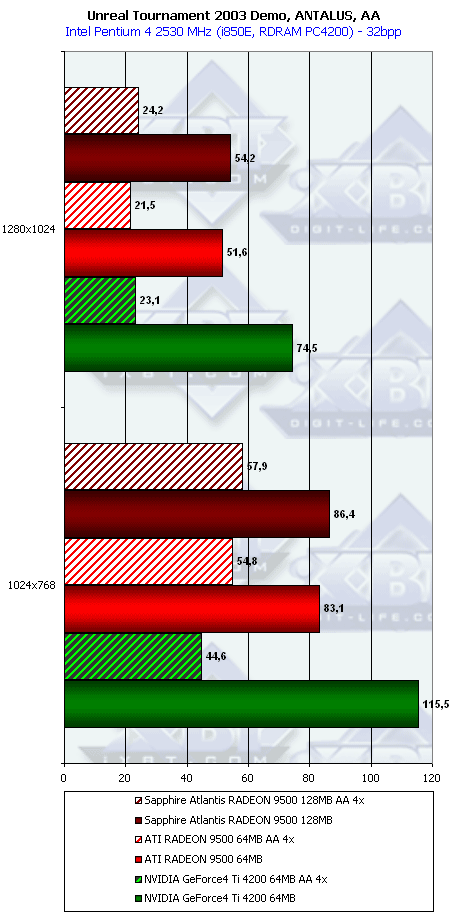 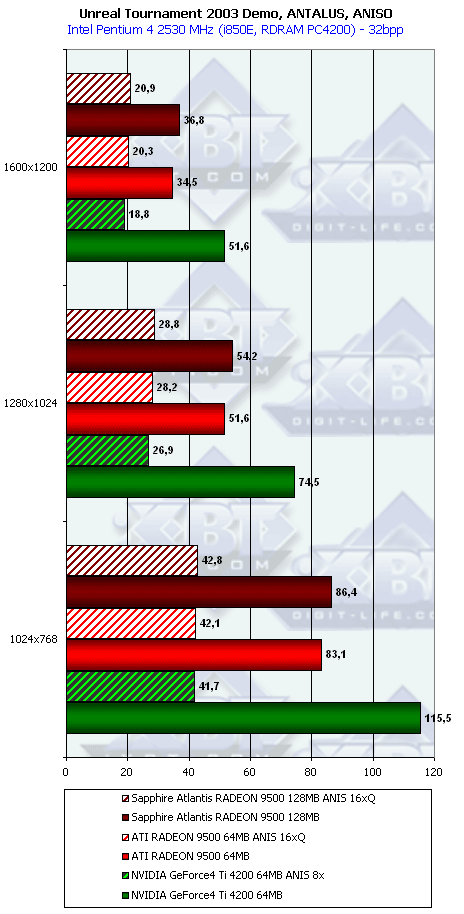
RightMark 3D
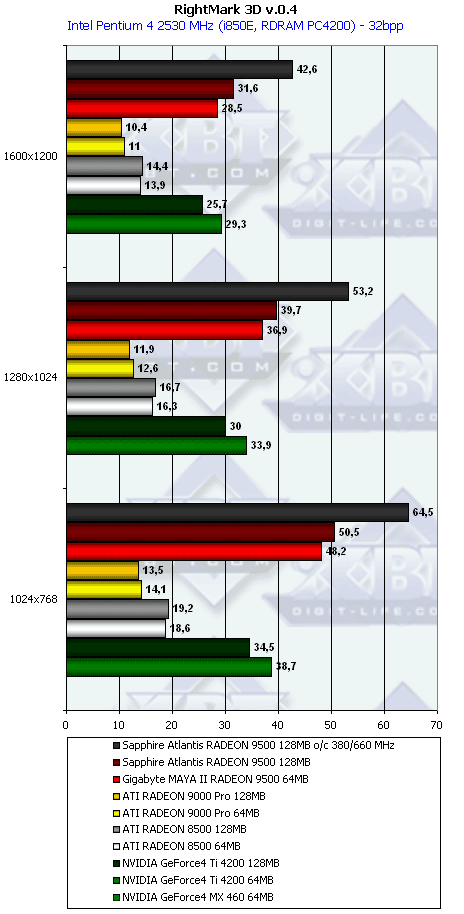
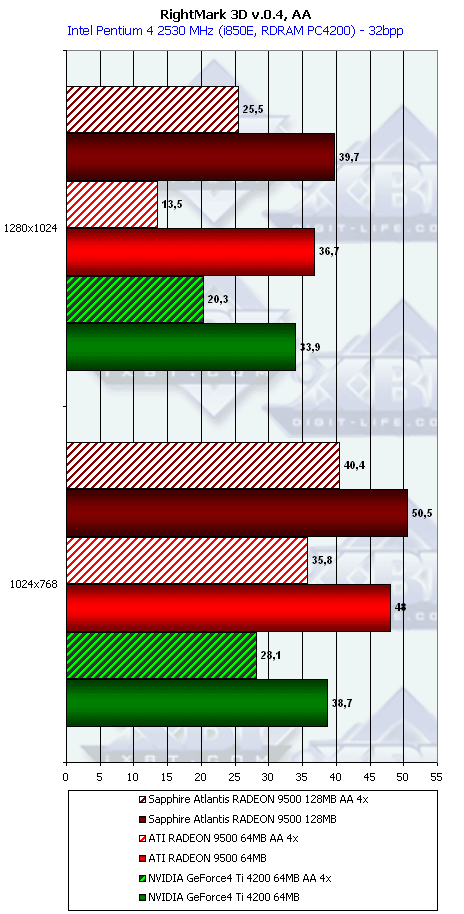 
DOOM III v.0.02We decided to test various video cards in the alpha version of the DOOM III which recently leaked into the Net. Although this "half-game" comes with its own demo program, we used two programs provided by 3DNews.ru. They are demo002 and demo006. To find them go to the DOOM III v.0.02 review published on this site. 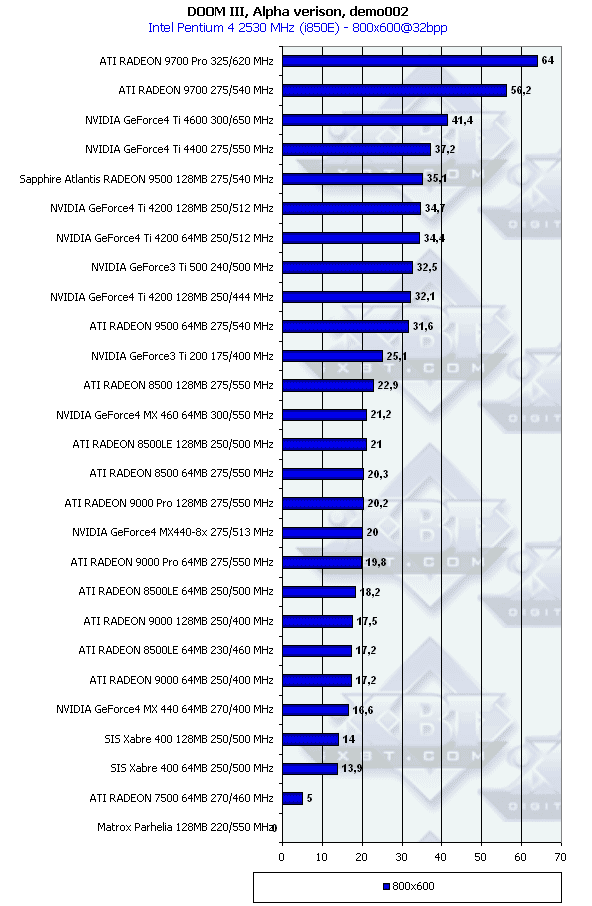
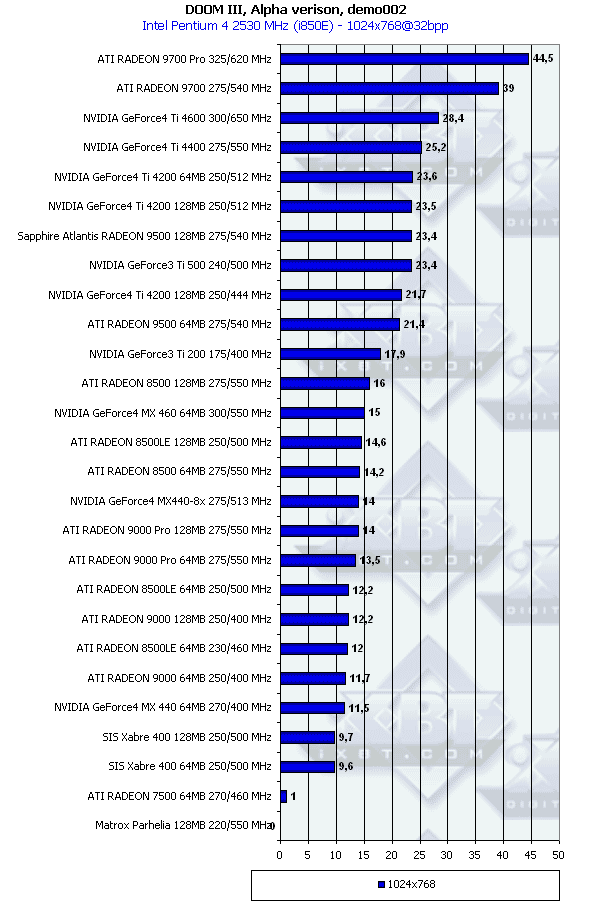 
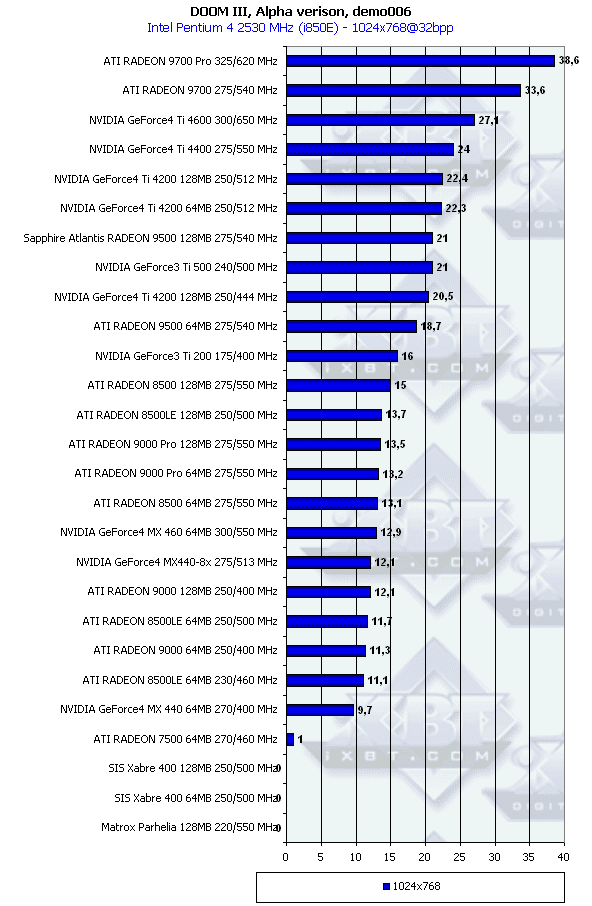 Conclusion
Andrey Vorobiev (anvakams@ixbt.com)
Write a comment below. No registration needed!
|
Platform · Video · Multimedia · Mobile · Other || About us & Privacy policy · Twitter · Facebook Copyright © Byrds Research & Publishing, Ltd., 1997–2011. All rights reserved. | |||||||||||||||||||||||||||||||||||||||||||||||||||||||||||||||||||||||||||||||||||||||||||||||||||||||||||||||||||||||||||||||||||||||||||||||||||||||||||||||||||||||||||||||||||||||||||||||||||||||||||||